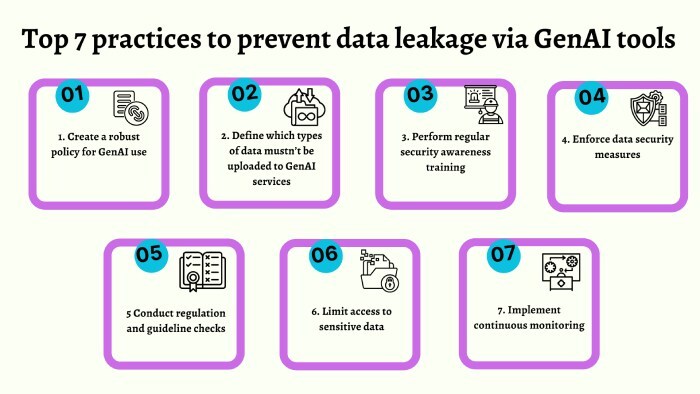In general, cyber resilience is a company’s ability to withstand, respond to, and recover from cyberattacks or IT failures while continuing to operate smoothly. It’s like having a backup plan and strong defenses to keep business running even when something goes wrong.
There is no strict definition of cyber resilience as the digital landscape keeps evolving; a rigid definition will fail to accommodate the rapid changes and newer threats.
This is the era of generative artificial intelligence; now, it’s up to the users’ discretion how they want to leverage its prevalence. While CISOs and cybersecurity experts are busy conforming and sorting AI-driven tools to build cyber fortification for technical infrastructures, cybercriminals are rummaging through the same to attempt malicious activities. They exploit generative AI to develop codes, scripts, graphics, texts, voice messages, etc., that would otherwise demand onboarding a learned person.
According to PwC’s report, they surveyed 4,042 businesses and tech executives from 77 countries and territories. Almost 67% of security leaders accept that generative AI has increased the surface area of their attacks. Furthermore, 77% of them expect their cyber budget to increase in the coming year.
While the increased reliance on cloud storage and connected devices has boosted productivity and efficacy for companies, it has also expanded the attack surface, reshaping the scope of cyber resilience again.
The growing gap between adoption and adaptation
Companies are rapidly adopting AI-powered tools and systems; however, they are failing to upgrade and adapt their cyber defenses to handle the threats emerging from them. Because of unaddressed risks, expanded attack surface, and exposure, companies are becoming highly vulnerable to cyberattacks, data breaches, operational disruptions, and reputational damages.
The abrasion from these incidents isn’t limited to companies only; it’s actually extended to customers, users, prospects, etc.. If a brand name is constantly being tossed up in malicious activities, its target audience is surely going to switch to its competitors.
Narrowing the divide by aligning differences
Businesses need to speed up their cyber resilience efforts to bridge the gap; it’s high time that they invest in cyber resilience at the same pace as they adopt new technologies. Otherwise, their struggle to keep up with emerging threats will only get harder.
Enhancing cyber resilience requires implementing SPF, DKIM, and DMARC for robust email security, protecting against phishing, spoofing, and unauthorized access.
Companies need to first determine their risk tolerance. This basically means how much risk they are willing to take before taking action against a cybersecurity incident. You must understand that not all threats require an immediate, aggressive response.
As CISOs, CEOs, or cybersecurity experts of a company, you must answer these questions to determine the risk tolerance-
- What are our most valuable digital assets, and how much risk can we afford around them?
- What is the financial impact of a cyber incident, and how much loss can we tolerate?
- How much downtime can our business handle before it affects operations?
- What level of cybersecurity investment aligns with our business strategy?
- Are we prioritizing security at the same pace as we adopt new technologies?
- How prepared are we to respond to and recover from a cyberattack?
- Are we meeting all compliance and regulatory requirements, or do we accept some level of non-compliance risk?
- How do we verify the accuracy and integrity of AI-generated code, reports, or recommendations?

- Are we comfortable with AI models having access to sensitive corporate data, and how do we prevent data leakage?
- What controls do we have to prevent biased or manipulated AI outputs from impacting our business?
- How do we ensure compliance with evolving regulations on AI governance and cybersecurity?
- What level of transparency do we require from third-party AI vendors regarding their security practices?
Understanding risk tolerance isn’t about eliminating risk entirely—it’s about making informed decisions that balance security, business growth, and operational efficiency.
Governments and regulators are proactively contributing to cyber resilience
Governments and regulators are strengthening cyber resilience. The EU’s NIS2 directive sets cybersecurity standards for businesses, while DORA focuses on risk management, resilience testing, and incident reporting in the financial sector.
Standardized rules help build trust in third-party software and hardware, creating a unified cybersecurity framework. This regulation revolution will accelerate in 2025, with the EU Cyber Resilience Act coming into effect in 2027, alongside ongoing AI regulation discussions. Businesses must stay compliant both now and in the future.
Aligned efforts for 2025 and beyond
A safer cyber future demands a balance between innovation and risk. Generative AI, machine learning, and other recent technical advancements bolster both defense and offense. That’s exactly why CISOs and executives must consider the unpredictable attack vectors and integration challenges before adopting new-age tools, cloud technologies, SaaS, and other systems.
Companies are also preparing for the quantum era. While quantum technology is still evolving, there’s a growing need to develop quantum-resistant security to protect against future cyber threats. Quantum computers can break encryption methods, leaving sensitive data vulnerable to breaches and exploits. Thus, preparing now ensures businesses remain secure and resilient in the quantum future.
The cyber resilience journey starts with addressing the elephant in the room. It’s about confronting important but unspoken problems instead of pretending they don’t exist.

